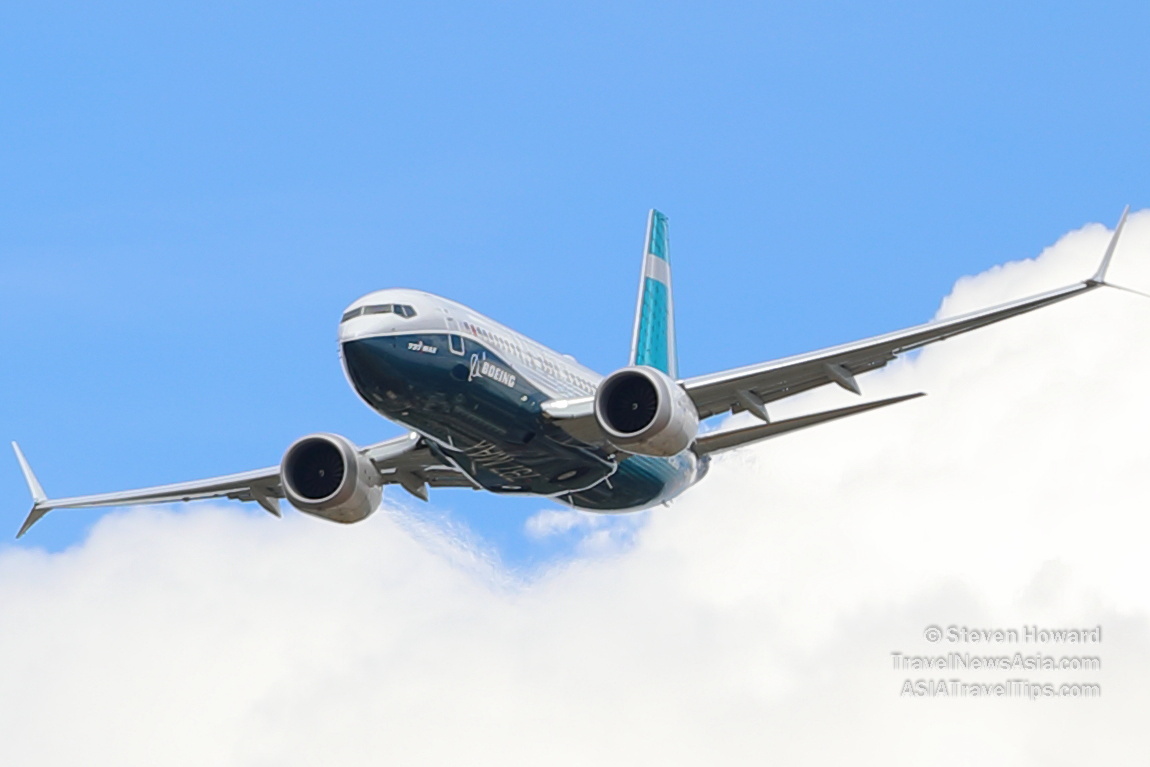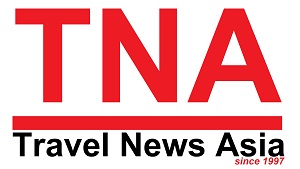|
(09 Nov 2021)
Boeing has estimated that air travel within Asia
Pacific markets will account for nearly half of global air traffic
by 2040, driving 20-year demand for 17,645 new airplanes valued at
$3.1 trillion.
To support its commercial aviation industry,
Asia-Pacific countries will also require aftermarket services
valued at $3.7 trillion.
The forecasts are part of Boeing’s 2021
Commercial Market Outlook (CMO), the company’s long-term forecast
of demand for commercial airplanes and services.

Boeing 737 MAX 7. Picture by Steven Howard of TravelNewsAsia.com
The Asia Pacific region has diverse air travel
markets, including mature economies in Northeast Asia and Oceania
as well as rapidly growing aviation markets in China, South Asia
and Southeast Asia.
With travel recovery enabled by rising
COVID19 vaccinations, Boeing believes that Asia Pacific carriers
are well-positioned to capitalize on recovering business and
leisure travel as well as air cargo transportation.
“We have
seen strong resilience in Asia Pacific traffic when restrictions
are lifted and passengers feel confident about travel,” said
Darren Hulst, Boeing vice president of Commercial Marketing.
“Carriers with efficient and versatile fleets will be positioned
to meet passenger needs and air freight demand with airplanes that
reduce fuel use, emissions and operating costs.”
Boeing’s
CMO analysis addresses 20-year demand for the five regions within
Asia Pacific:
- Southeast Asian countries seeing rapid
economic growth will also see fleet growth and passenger traffic
well above global averages. Low-cost carriers are forecast to
expand intra-regional networks with single-aisle jets, while open
skies and trade agreements will enable carriers to invest in
fuel-efficient widebodies to serve long-haul routes. Southeast
Asia is forecast to need 4,465 new airplanes valued at $765
billion and commercial aviation services valued at $790 billion by
2040.
- In Northeast Asia, mature economies will continue
to support a balanced air travel market across domestic, regional
and long-haul travel segments. Fleet replacement will account for
nearly 75% of new deliveries as airlines look to improve
sustainability and fleet versatility. The region is expected to
need 1,385 new airplanes valued at $310 billion as well as
services valued at $555 billion in the next 20 years.
- In
Oceania, commercial aviation serves as critical transportation
infrastructure across long distances and island nations. Domestic
and regional travel accounting for 80% of passenger traffic will
drive single-aisle demand, while versatile widebody jets such as
the 787 Dreamliner will support long-haul and international
network development. Oceania is projected to need 785 new jets
valued at $135 billion and services valued at $165 billion by the
end of the forecast period.
The 2021 CMO includes these projections for Asia Pacific
through 2040:
- Single-aisle jets will account for nearly
13,500 deliveries, about three-quarters of demand in terms of
units. Widebody jets including passenger and cargo models will
total nearly 3,800 airplanes.
- The cargo fleet will more than
triple to 1,160 airplanes, including new and converted models, to
support diversifying global supply chains and meet e-commerce
demand. The Asia Pacific cargo fleet is expected to roughly equal
North America’s cargo fleet by 2040.
- Tied to economic and
fleet growth, demand for maintenance, repair, overhaul and
modifications account for a majority of projected commercial
aviation services demand. Digital solutions, analytics and
training services also will support the Asia Pacific fleet.
- Boeing’s 2021 Pilot and Technician Outlook (PTO) forecasts
that the region will require nearly 820,000 new aviation
personnel, including more than 230,000 pilots and nearly 250,000
technicians and 340,000 cabin crew members.
Published on TravelNewsAsia.com at:
https://www.travelnewsasia.com/news21/911-AirTravel.shtml
|
Headlines: |
|
|
